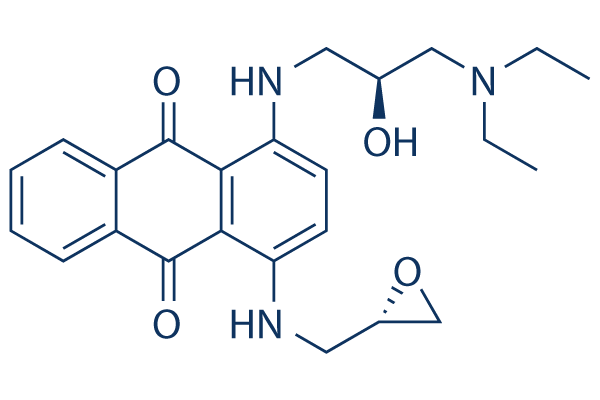| Cas No.: | 1909226-00-1 |
| Chemical Name: | 1-[[(2S)-3-(二乙基氨基)-2-羟基丙基]氨基]-4-[[(2S)-2-环氧乙烷基甲基]氨基]-9,10-蒽醌 |
| Synonyms: | BDA-366;BDA 366;BDA366 |
| SMILES: | CCN(CC(O)CNC1C=CC(NCC2OC2)=C2C(C3C(C(=O)C=12)=CC=CC=3)=O)CC |
| Formula: | C24H29N3O4 |
| M.Wt: | 423.51 |
| Purity: | >98% |
| Sotrage: | 2 years -20°C Powder, 2 weeks 4°C in DMSO, 6 months -80°C in DMSO |
| Description: | BDA-366 is a small-molecule Bcl2-BH4 domain antagonist, BDA-366, that binds BH4 with high affinity and selectivity. BDA-366-Bcl2 binding induces conformational change in Bcl2 that abrogates its antiapoptotic function, converting it from a survival molecule to a cell death inducer. BDA-366 suppresses growth of lung cancer xenografts derived from cell lines and patient without significant normal tissue toxicity at effective doses. mTOR inhibition upregulates Bcl2 in lung cancer cells and tumor tissues from clinical trial patients. Combined BDA-366 and RAD001 treatment exhibits strong synergy against lung cancer in vivo. |

 To enhance service speed and avoid tariff delays, we've opened a US warehouse. All US orders ship directly from our US facility.
To enhance service speed and avoid tariff delays, we've opened a US warehouse. All US orders ship directly from our US facility.




















